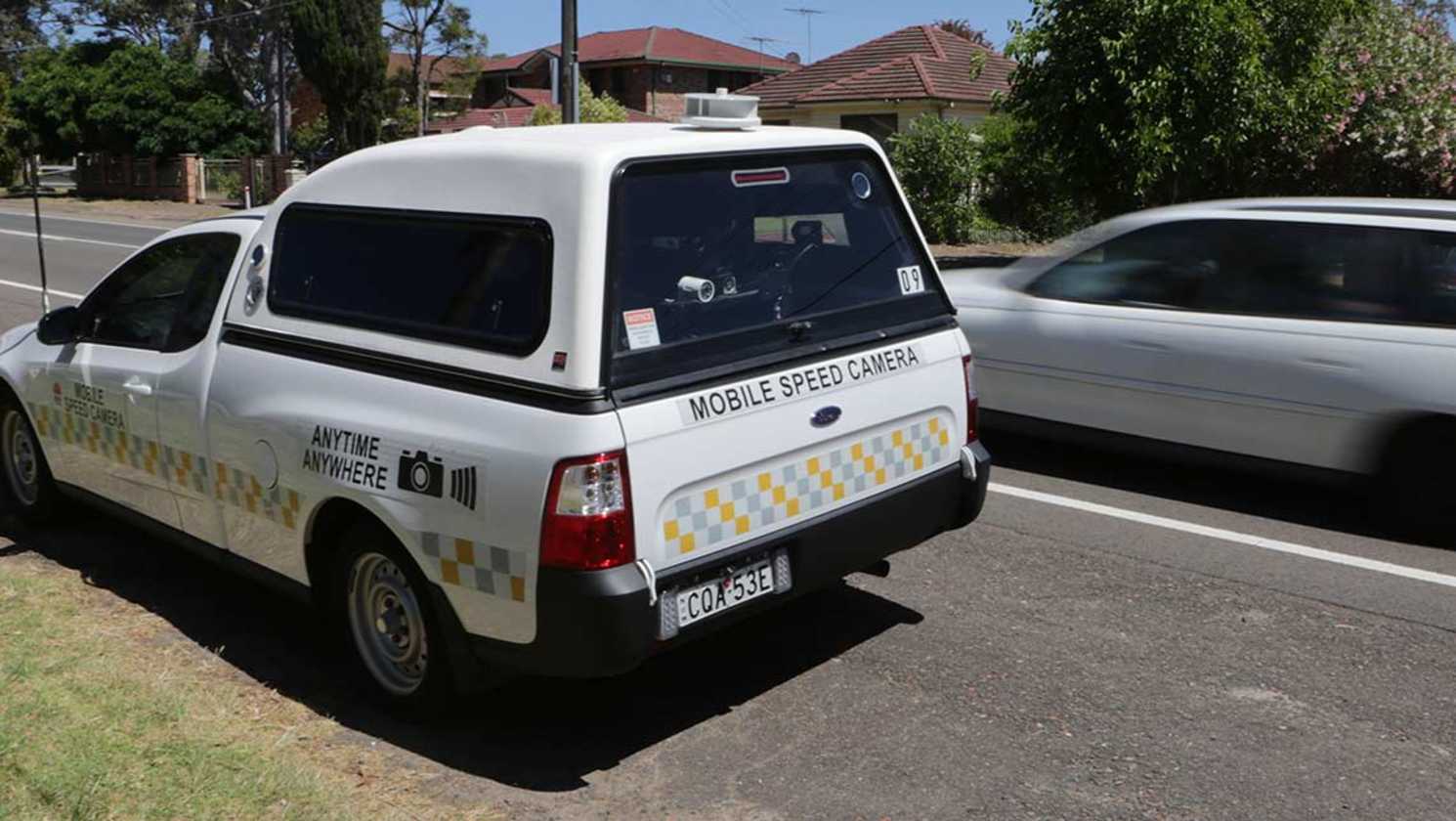Is there a more contentious motoring issue than the use of speed cameras in Australia? For a lot of road users, the answer is no, and these devices haven’t become any less controversial despite being in use now for decades.
These days, speed cameras fall into two categories. There’s the fixed location camera which is a permanently mounted unit and, these days, is also likely to incorporate a red-light camera if it’s located at an intersection.
Then there’s the mobile speed camera which can be mounted in a vehicle (and more recently a trailer) and taken to any location. Most recently (in NSW) the time-over-distance fixed cameras which were originally designed to monitor the trip times of heavy vehicles have been repurposed to act as speed cameras for all traffic, but these rate as another form of fixed camera.
Victoria was the first Australian state or territory to use mobile speed cameras and while those early attempts way back in 1985 were a toe in the water, by 1989, the Victorian Police had figured out that mobile cameras could catch far more motorists doing the wrong thing.
And suddenly, the Australian mobile speed camera was off and racing. And earning the various states a huge revenue in the form of speeding fines.
Yet, for all that, and they’ve been around for a long time, there’s still a measure of mystery about them.
So what are the realities of mobile speed cameras? Are they just out to raise revenue or are they a legitimate way to fight the road toll? And what do you need to know to prevent them gnawing away at your licence and your wallet?
First up: How do they work and are they accurate?
By using radar or LIDAR technology, the equipment inside a mobile camera can detect a vehicle’s speed and compare that with the posted limit.
If the former is above the latter, the camera knows to take a snap which is then processed and an infringement notice sent to the car’s registered owner.
Of course, that might not necessarily be the person who was driving the car at the time. At which point, the onus is on the car’s owner to prove it wasn’t them driving and have the fine diverted to whoever was at the wheel.
There’s nothing new about this type of technology, and accuracy, provided the equipment has been maintained and calibrated correctly, is pretty much beyond dispute, too. The authorities have strict protocols for maintenance and calibration to rule out any legal challenge on the grounds of accuracy.

How are the locations chosen?
The official line is that speed cameras are placed in black-spot or other dangerous locations. Experience says otherwise with many cameras positioned where they’ll take the most photos of cars a few kilometres over the limit (often a stretch of road with an arbitrarily low speed limit) rather than any accident hot-spot. This is, perhaps, one of the most contentious elements of the way speed cameras are used.
How do you spot a mobile speed camera?
In some states, the legislation requires that there’s a roadside sign to warn you as you approach a mobile camera as well as another one after the camera to let you know your speed has been checked. What those signs won’t tell you is whether you’ve been pinched, which is another controversial element of this type of policing.
But other states – notably Victoria – are now happy to leave the camera cars as inconspicuous as possible. Officially the government line is that: “Although mobile speed cameras are not sign-posted, they are not deliberately hidden”.
But as many drivers will attest, that doesn’t seem to be the case in the real world where camera cars often seem to be hiding behind bushes, trees and other roadside furniture.
Victoria has also scrapped the operating rule that a speed camera should not be used on a hill or gradient. The cameras are often mounted in plain-looking SUVs, too, with tinted windows so you can’t see what’s going on inside.

Do mobile speed cameras flash?
Again, this is a hotly debated topic because the current camera and speed-detection technologies mean the camera can still take a photo of a speeding car without a flash, leaving the motorist absolutely none the wiser that they’re doing the wrong thing at the time.
The police will tell you that this is okay because it means the driver will try not to make the same mistake again, but others argue that such stealthy operation means the camera cannot possibly prevent an incident caused by the original speeding event.
Some mobile cameras still use flash technology at night, but a lot of them are now equipped with infra-red flash technology that the driver won’t see, even at night. The result is that most motorists won’t even know they’ve passed a camera until the fine arrives in the mail.
.jpg)
At what distance do mobile speed cameras work?
Here’s some more bad news. The modern mobile camera can detect a speeding car from as far out as several hundred metres. That means you’ve been spotted and will be photographed before you’ve had the smallest chance to identify the parked car as a mobile camera. Mobile speed camera range is increasing all the time as laser-radar and LIDAR technologies improve.
Do mobile speed cameras get you from the front or back?
It depends what state you’re in, but the general rule is that on multi-lane roads, the cameras can work in both directions, while on single-lane roads, the cameras only shoot in one direction.
In previous times, that was usually from the front, but these days, that’s usually from the rear as you approach the camera.
A great example of all this is the Gatso T-Series camera which is usually mounted in the rear of a Victorian camera car and can scan up to six lanes of a multi-lane road all at once.
The camera not only identifies the speeding vehicle, but marks the guilty car in the photograph with a yellow box.
.jpg)
How do you know if you’ve been caught by a mobile speed camera?
Basically, you don’t and this is the main criticism of speed cameras in general. Because the driver doesn’t know they’ve been snapped until the fine comes in the mail, the camera has had zero effect on the circumstances on that day.
Had the speeding driver been about to cause an accident, the speed camera would have done precisely nothing to prevent it (compared to a highly visible police car and officer issuing an on-the-spot fine, anyway).
The authorities’ line is that the driver who gets a fine in the mailbox is unlikely to allow the same thing to happen twice. Not knowing where the cameras will be, say the authorities, means drivers have to obey the limit at all times as the risk of stumbling across a camera is everywhere.
But as a deterrent to drivers unwittingly or briefly exceeding the speed limit in real time, a speed camera is, arguably, useless.

The latest
The most recent new form of mobile speed camera is being trialled in Victoria and is already in use in WA, and consists of an unmanned trailer that is parked beside the road and can scan multiple lanes at once.
It uses LIDAR technology and can also identify cars with expired registration as well as cars whose owners have outstanding fines and toll fees.
The trailer is towed into place by the speed camera operator, the wheels and draw-bar retracted for security and the unit can be remotely operated for up to 10 days before scheduled maintenance is required. Other security measures include a surveillance camera on board and a bullet-proof casing. Paranoid? Us?
Perhaps the most controversial aspect of the Victorian trial of the trailer is that the first one was parked in a cycle lane on a busy suburban arterial road.
But that’s not all. VIC is also trialling a trailer-mounted camera that aims to catch drivers doing the wrong thing by either using a mobile phone at the wheel or failing to wear a seat belt.
The trailer is fitted with two cameras and an infra-red flash that are enabled with AI software (which should be ringing bells already).
The camera photographs every car passing it and if there’s no detection of a potential offence, the photo is scrapped. If there’s a suggestion of mobile-phone or seat-belt non-compliance, the trailer forwards the photo to a human for a final decision.

What can you do?
Once you’ve been snapped by the camera, there’s not much to do other than keep an eye on the mailbox for the fine and demerit points to arrive. Most states publish a monthly updated list of the locations of mobile speed cameras, but this is a bit needle-in-a-haystack unless you can memorise the whole list (unlikely).
If you do receive a fine, you have the right to request to see the photograph in question which, since it’s Exhibit A, is worth doing as it may identify a different driver or perhaps even a car from a different state with the same registration number (it’s happened, trust us).
Depending on your home state, you might also find that if you have a clean driving record and the speeding offense wasn’t beyond 10km/h over the speed limit, you can appeal in writing to have the matter reviewed.
If you’re successful, you will have the fine replaced by an official warning. But for bigger speeding offences, mobile-phone and seat-belt infractions, forget it.
.jpg)
.jpg)

.jpg)
.jpg)
.jpg)












_0.jpg)
.jpg)
.jpg)

.jpg)

